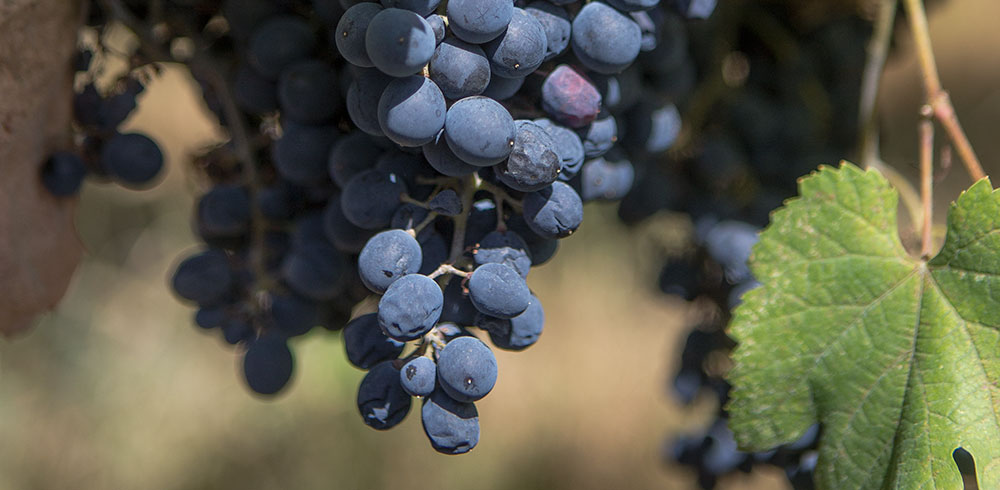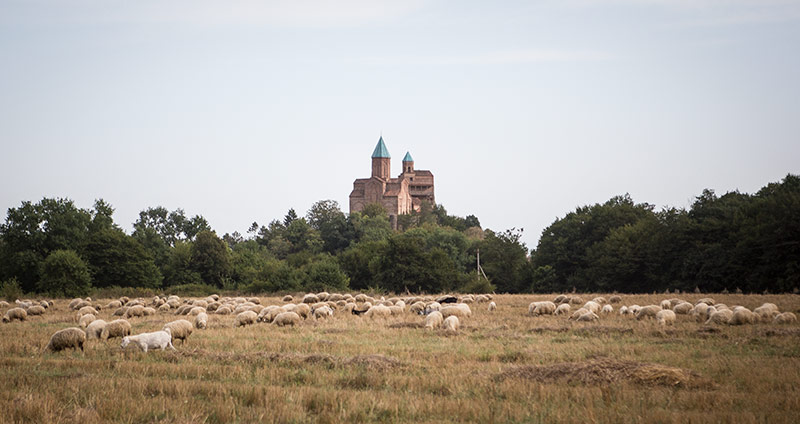The Republic of Georgia producers about 100 million liters annually. This barely places them in the Top 25 of wine producing countries and given that about 75% of this total is white wine, you can be forgiven for not being aware of their native red grape Saperavi. It’s believed to have originated from the eastern Kakheti Region and it is most certainly no Syrah, Cabernet Sauvignon, or even Carignan on the world wine stage.
Saperavi has two big things going for it however. Silly as it may sound, the first is that the name is easy to pronounce. This is after all a country where you have a white grape called, Khikhvi–delicious yet not easy to say. The second positive for Saperavi is that if desired, you can pretty easily find it wherever in the world you might live. Production is and has been at steady levels, more so than say, Tavkveri.
In the minus category is that the grape can sometimes be an acquired taste and admittedly, Georgian cellars at large are still re-learning the grape after decades of the Soviet Union’s idea of terroir which was, “make more wine on it”. Glancing through the tasting notes for Saperavi wines on this site, the terms “firm”, “hard”, or my favorite, “Not for those who love gentle Merlot” can pop up. And rightly so as, having traveled across the entire country, I’d add in there, “bombastic”, “yikes”, and “like a tannic cat fight in my mouth”.
Some of this is inherent in the grape as it’s a darkly-skinned grape whose name actually means something along the lines of, “gives color” and it most certainly lives up to this as it can be jet black. But, in addition to color, these skins also give tannins; lots and lots of them.
This is of course a question of style, in that if made in the traditional kvevri method, the grapes see considerable contact with the skins. While the white wines will often receive up to six months (essentially until the vessel is opened in the spring) the reds can see a good deal as well with some winemakers leaving in the skins for months, at least in Kakheti. In the west of the country, less skin contact is generally preferred and many in the east have been adopting this as well given that the resulting wine with lengthy skin contact is well, potent.
Due to how economics work for many of the winemakers, they’re bottling and selling wines that just emerge from the kvevri or barrels before the next harvest, basically right after (or unfortunately during) malolactic fermentation. With some cellars producing less than 5,000 bottles, it’s not surprising that they need to turn over inventory quickly. Unsurprisingly, this is too soon for most wines made from Saperavi and it’s a shame as it doesn’t give a complete picture of what this grape is capable of.
During the recent month I spent in Georgia, visiting all the cellars, I was thankfully shown that the grape, when allowed to really, really age, can produce stunning results. For instance, the 2011 Saperavi made in kvevri from Lagvinari, even though it needs time to open up, can show luscious tar, licorice, and red fruit. To me, it has all the hallmarks of a wine that needs to sit more time and continue its course while owner, Eko Glonti continues his exploration of his country’s native grapes. But with enough patience, it will indeed round out and evolve.
Kvevri wines are of course controversial as some find that it is more about the process than the grape. That’s a just accusation, although in tasting both Cabernet Sauvignon and Chardonnay made via kvevri, it was readily apparent that something was “off” and the grapes didn’t take to the process the same way that the Georgian ones did. In the case of Chardonnay, it was clear that the rather oxidative process did it no favors aromatically.
This is why it was wonderful on my last day in Kakheti that I went to the Kakhuri winery. I was initially greeted by a very industrial “wine factory” as the Georgians are wont to call any cellar that doesn’t use the ancient kvevri method. But after a quick tour, we settled into their tasting room that opens upon a broad view of Caucasus Mountains where omnipresent Russia lurks just behind. The managers had set out a tasting of four years of their top-end Saperavi wine which is made using what Europeans would know as the “traditional” method of aging in oak barrels. The Georgians simply call it, “European technology”.
It was an excellent journey through 2013, 2008, and 2005, but what really took my breath away was the 2004. In this wine was everything bold about the grape, but fully tamed. Cigar and tea leaf notes led into a long finish that still holds lingering traces of fruit. What I find to be the signature tar and licorice notes in Saperavi wines have long since integrated into a holistic, wonderful bottle.
Few people will get to experience this grape in such a form and sadly it’s due to the fact that very few people can afford to let their wines age two years, let alone the 12 that I saw in this wine from Kakhuri. Due to this, it seems to be a wonderful moment wherein winemakers are trying what experimentation that they can from a barrel finish on kvevri wine, to less skin contact, to a form of submerged cap fermentation, to any number of other tweaks to bend this hearty wine in to being approachable–at a much younger age.
There shouldn’t be anything mind blowing in this however as we see Barolo and Cornas producers wanting to do the exact same thing. Even though there are a couple of Georgian cellars that can afford to sit on the wines during Saperavi’s bratty childhood and moody teenage years, there’s still the problem of a thirsty wine drinking public, who doesn’t want to wait. Thus, one of the most interesting things happening in Georgian winemaking right now is how to make this grape behave at all ages and as the rate of small, boutique cellars increases, so do the experiments and hopefully, the successes.


